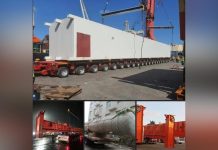Africa-Press – Zambia. Zambia’s current electricity crisis did not emerge overnight, nor is it the result of neglect or indifference. It is the culmination of years of structural dependence on hydropower, a dependence that has become increasingly precarious as the country faces repeated climate shocks. Today, President Hakainde Hichilema has made a difficult and deeply unpopular decision—one that reduces electricity access for households at a time when frustration is understandably high. But for all its immediate discomfort, it is the only logical and permanent path that can protect Zambia’s economy, safeguard lives, and secure the country’s long-term energy future.
For decades, Zambia’s energy system has been anchored on hydropower. This choice made sense historically: water sources were abundant, hydro plants were cheaper to construct, and—most importantly—they provided stable baseload power essential for national grid stability. But the droughts of 2017/18 and again in 2023/24 have drastically reduced water inflows into major reservoirs like Lake Kariba. As a result, hydropower plants are now operating at some of their lowest capacities in history.
By November 2025, Zambia’s actual electricity generation had fallen to about 1,469 MW against a national demand of roughly 2,600 MW, creating a crippling deficit of more than 1,000 MW. With such constrained generation, ZESCO was forced to implement emergency Stage 11 load management, leaving households with an average of only three hours of electricity per day.
The instinctive response from many citizens is understandable: if we are generating over 1,400 MW locally and importing 238 MW, why can’t ZESCO simply allocate at least six consistent hours of power to households? The answer lies in the fundamental structure of Zambia’s economy and the nature of industrial operations. Mines, water treatment plants, hospitals, schools, and other critical infrastructure require firm, uninterrupted power. Mines in particular cannot be switched off even for twenty minutes without risking catastrophic flooding and loss of life.
These operations power the economy, generate revenue, sustain jobs, and keep the country functioning. Their continuous power needs are non-negotiable. The domestic sector receives power mostly when mines are less active—typically at night—because imports too are typically available during those hours when Zambia’s regional neighbors are consuming less.
In such a situation, one might argue that Zambia should simply import more electricity and shield households from the worst effects. But that path, though politically attractive, is fiscally reckless. Importing large amounts of power at high cost would plunge ZESCO back into dangerous indebtedness—the very trap the country has been working to escape. It would compromise the long-term viability of the utility, weaken the broader economy, and ultimately leave the nation more vulnerable.
President Hichilema has chosen prudence over political convenience, recognizing that the sustainability of the power sector is more important than temporary popularity. Few leaders would opt for such a path, yet it is precisely this tough, sober decision that will safeguard Zambia’s future.
The good news is that this crisis is not permanent, and the solutions are already unfolding. Zambia is moving rapidly to diversify its energy mix, reduce overdependence on hydro, and build a resilient system capable of withstanding climate shocks. Significant solar projects are nearing completion, with over 500 MW expected on the grid by the end of 2025. By the second quarter of 2026, this figure should rise to about 1,000 MW from solar alone. These additions mark a transformative shift, bringing clean, climate-resilient power into the system at an unprecedented rate.
New thermal generation is also coming online, leveraging Zambia’s substantial coal deposits in Southern and Muchinga provinces. Maamba will add 300 MW by the second quarter, and Goli will contribute another 150 MW, bringing thermal additions to 450 MW. Combined with solar, Zambia could have more than 1,000 MW of new capacity by mid-2026—enough to eliminate domestic load shedding and restore export capability.This mix matters. Hydropower and thermal sources provide a stable baseload that anchors the grid, while solar—particularly rooftop solar for households—can reduce pressure on the system and empower consumers. For this reason, ZESCO’s push to encourage rent-to-own solar solutions for domestic homes is not just wise; it is essential. As the country industrializes and aims to double its generation capacity to 10,000 MW by 2030, a diversified energy portfolio will drive mining expansion, support agriculture, and fuel manufacturing growth.
Zambia stands at a crossroads where short-term sacrifice is the price of long-term stability. Choosing not to take on more debt, choosing to protect the mining sector and other critical infrastructure, and choosing to accelerate sustainable energy investments—all these decisions reflect responsible governance rather than political calculation. Yes, this period is painful. Yes, businesses and households are suffering acutely. But it is a once-off pain, a temporary hardship that shields the country from far worse consequences down the line.
By June 2026, with new solar and thermal generation fully integrated, Zambia’s electricity supply will improve dramatically. Domestic load shedding can be eliminated, blackouts will become far less frequent, and the nation can return to exporting power instead of scrambling to import it. When that moment arrives, many will look back and recognize that President Hichilema’s difficult choice—unpopular though it may be—was the turning point that allowed Zambia to secure permanent energy stability.
Today’s sacrifice is the foundation of tomorrow’s prosperity. In time, Zambians will appreciate that this path, though hard, was the only logical one—and the only one that ensures a brighter, more secure future for the nation.
For More News And Analysis About Zambia Follow Africa-Press







